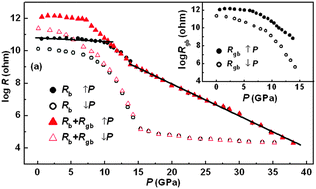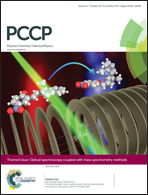Electrical transport properties of AlAs under compression: reversible boundary effect
Abstract
Herein, we report on the intriguing electrical transport properties of compressed AlAs. The relative permittivity and the resistances of both the grain and bulk boundaries vary abnormally at ∼10.9 GPa, accompanied by the cubic–hexagonal structural transition of AlAs. With further compression, the boundary effect becomes undistinguished, and subsequently, the electrical transport mechanism converts from boundary- to bulk-dominated, which gives rise to a significant reduction in the total resistance of AlAs. After being quenched to ambient pressure, resistances recover to the initial values followed by the re-emergence of the boundary effect. Eg decreases with pressure and its pressure dependence changes at ∼14.0 GPa, which rationalizes the anomalous variation of the electrical transport properties. The experimental results indicate that the boundary effect can be modulated by compression and increases the resistance difference between the two states. This opens up a new possible basis for optimizing the performance of AlAs-based applications, including multilevel phase-change memories.


 Please wait while we load your content...
Please wait while we load your content...